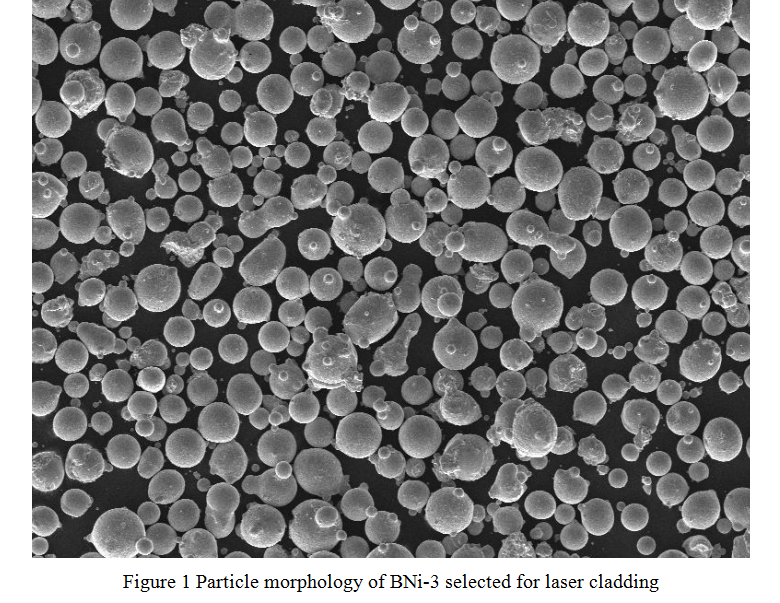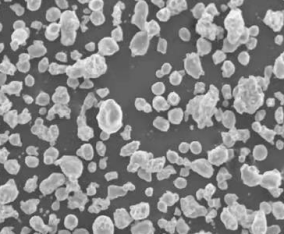FeCoNiCrAl powder—sounds complex, doesn’t it? It’s one of the rising stars in advanced metallurgy and materials science. This versatile alloy is part of a group known as high-entropy alloys (HEAs), celebrated for their remarkable mechanical properties and stability under extreme conditions. But why is it gaining so much attention? Let’s dig into this intriguing material, its unique features, and its applications.
Overview of FeCoNiCrAl Powder
FeCoNiCrAl powder is a high-entropy alloy composed primarily of iron (Fe), cobalt (Co), nickel (Ni), chromium (Cr), and aluminum (Al). These alloys are special because they balance multiple principal elements in nearly equal proportions, leading to a range of fascinating properties such as high strength, corrosion resistance, and thermal stability.
| Key Features | Details |
|---|---|
| Composition | Iron (Fe), Cobalt (Co), Nickel (Ni), Chromium (Cr), Aluminum (Al) |
| Key Characteristics | High strength, corrosion resistance, thermal stability, ductility |
| Applications | Aerospace, automotive, energy, biomedical, and additive manufacturing |
| Unique Selling Point | Exceptional properties derived from entropy-driven stability |

Composition of FeCoNiCrAl Powder
High-entropy alloys like FeCoNiCrAl are based on the concept of entropy stabilization. By mixing several metals in near-equal proportions, they form a single-phase solid solution instead of segregating into separate phases. Here’s a breakdown:
| Element | Role |
|---|---|
| Iron (Fe) | Enhances strength and durability |
| Cobalt (Co) | Provides magnetic properties and temperature stability |
| Nickel (Ni) | Increases toughness and corrosion resistance |
| Chromium (Cr) | Improves corrosion resistance and oxidation resistance |
| Aluminum (Al) | Contributes to oxidation resistance and lightweight properties |
This specific blend creates a harmonious alloy with a balance of mechanical, thermal, and chemical properties.
Characteristics of FeCoNiCrAl Powder
What makes FeCoNiCrAl powder so special? It’s not just another alloy—it’s a game-changer for materials in extreme environments. Let’s highlight its standout characteristics.
| Characteristic | Description |
|---|---|
| High Strength | Stronger than traditional alloys, capable of withstanding high mechanical loads. |
| Thermal Stability | Maintains structural integrity at elevated temperatures. |
| Corrosion Resistance | Excellent resistance against oxidizing and corrosive environments. |
| Ductility | Provides flexibility, reducing the risk of brittle failure. |
| Lightweight | Lighter than many conventional alloys, reducing energy consumption in applications like aerospace. |
| Wear Resistance | Withstands friction and mechanical wear better than many traditional alloys. |
Types of FeCoNiCrAl Powders
Here’s where it gets even more interesting. FeCoNiCrAl powders come in various grades, tailored for specific applications. Below is a list of at least ten specific models, highlighting their unique features.
| Model | Unique Features |
|---|---|
| FeCoNiCrAl-1 | General-purpose grade with balanced mechanical properties. |
| FeCoNiCrAl-2 | Enhanced corrosion resistance, ideal for marine environments. |
| FeCoNiCrAl-Ti | Incorporates titanium for increased toughness and wear resistance. |
| FeCoNiCrAl-Nb | Contains niobium for superior high-temperature performance. |
| FeCoNiCrAl-Cu | Copper addition for enhanced thermal and electrical conductivity. |
| FeCoNiCrAl-B | Boron-enhanced for improved grain refinement and mechanical stability. |
| FeCoNiCrAl-N | Nitrogen-stabilized for exceptional strength under high strain rates. |
| FeCoNiCrAl-H | Hydrogen-resistant grade for hydrogen storage and fuel cell applications. |
| FeCoNiCrAl-Si | Silicon addition for increased oxidation resistance at ultra-high temperatures. |
| FeCoNiCrAl-W | Tungsten-enriched variant for superior wear and creep resistance. |






Applications of FeCoNiCrAl Powder
FeCoNiCrAl powder’s versatility means it’s useful in a wide array of industries. Let’s explore where it shines the most:
| Industry | Application |
|---|---|
| Aerospace | Turbine blades, rocket components, and heat shields. |
| Automotive | Lightweight, corrosion-resistant parts for high-performance vehicles. |
| Energy | Heat exchangers, power plant components, and hydrogen storage. |
| Biomedical | Implants and prosthetics, thanks to its biocompatibility. |
| Additive Manufacturing | Powder-bed fusion techniques like SLM (Selective Laser Melting) and EBM (Electron Beam Melting). |
| Defense | Armor components and critical military hardware. |
| Electronics | High-performance electrical contacts and thermal management systems. |
Advantages of FeCoNiCrAl Powder
Why choose FeCoNiCrAl powder over other materials? Let’s break it down:
| Advantage | Why It Matters |
|---|---|
| Superior Strength | Performs better under stress compared to conventional alloys. |
| High Versatility | Suitable for both extreme heat and cryogenic conditions. |
| Corrosion Resistance | Lasts longer in harsh environments, reducing maintenance costs. |
| Adaptable Composition | Can be tailored for specific needs by tweaking its elemental makeup. |
| Environmentally Friendly | Potential to reduce resource usage due to its long lifespan and recyclability. |
Specifications and Standards
To ensure consistent performance, FeCoNiCrAl powder is produced under strict specifications.
| Specification | Details |
|---|---|
| Powder Size Range | 15–45 µm, 45–105 µm (common for additive manufacturing). |
| Purity | ≥ 99.9% |
| Standards | ISO 9001, ASTM F3049 (for additive manufacturing). |
| Density | ~7.9 g/cm³ |

Suppliers and Pricing
Finding the right supplier is crucial. Below are some popular suppliers along with approximate pricing details.
| Supplier | Region | Pricing | Notes |
|---|---|---|---|
| AMETEK Specialty | USA | $250–350/kg | High-quality powders for aerospace. |
| Höganäs AB | Europe | $200–300/kg | Reliable supplier with global presence. |
| Sandvik Materials | Global | $220–320/kg | Renowned for consistency in powder size. |
| Carpenter Additive | USA | $230–330/kg | Focus on additive manufacturing powders. |
FAQs
| Question | Answer |
|---|---|
| What is FeCoNiCrAl powder? | A high-entropy alloy made of iron, cobalt, nickel, chromium, and aluminum. |
| What are its primary applications? | Used in aerospace, automotive, energy, and biomedical industries, among others. |
| Why is it called a high-entropy alloy? | Because it balances multiple principal elements in equal or near-equal proportions. |
| How does it compare to traditional alloys? | It offers superior strength, corrosion resistance, and thermal stability. |
| Is it suitable for 3D printing? | Yes, it is widely used in powder-bed additive manufacturing techniques. |

